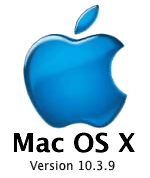 |
 |
 |
 |
 |
|||||||
Assignment 5: Scheduling
| Assignment Day | September 29, 2009 |
| Due Date | October 06, 2009 (Tuesday) |
| Email (time stamp) and typed hardcopy on Wednesday in Anirban's mailbox. |
Read chapter on scheduling (p 183 - p 223, chapter 5 - in Silberschatz, Galving and Gagne's 8th Edition of OS Concepts).
Please also make sure you read about "scheduler activations" in the previous chapter on threads, p 170- p 171). There are notes about this approach in the course power points.
Question 1 :
Suppose that three CPU-bound jobs A, B and C arrive in the system, with CPU demands of 14 seconds, 7 seconds, and 4 seconds, respectively. Draw a Gantt chart and compute average wait time and the penalty ratio for: FCFS, SJF, SRJF and RR.
For RR - please use a quantum size of 1, 2 (either or both). For arrival time - for A use 1, for B use 0, and for C use 2.
Question 2 :
Consider a workload of 5 jobs that each have an equal length burst and none of them perform I/O. To minimize average waiting time of the jobs should you use a FCFS scheduler or RR scheduler. Explain.
Question 3 :
Describe two circumstances in which a SRJF scheduler will schedule a new job to execute on the CPU but SJF will not.
Question 4 :
(a) Of all the scheduling strategies discussed in class, which are starvation free?
(b) Any remedies for the strategies that starve their processes?
Question 5 : Reading
A. Consider the paper: Anderson’s Spinlock paper. How does dynamic delay perform in comparison to static delay and why does one perform better than the other?
B. What is the primary advantage of using traces to test scheduling algorithm instead of embedding and evaluate the algorithm in a working environment?
C. What scheduling algorithm is suggested for processes that are unpredictable (in terms of being I/O or CPU bound - they are neither).
Optional practice (not graded).
5.3, 5.4, 5.5, 5.6